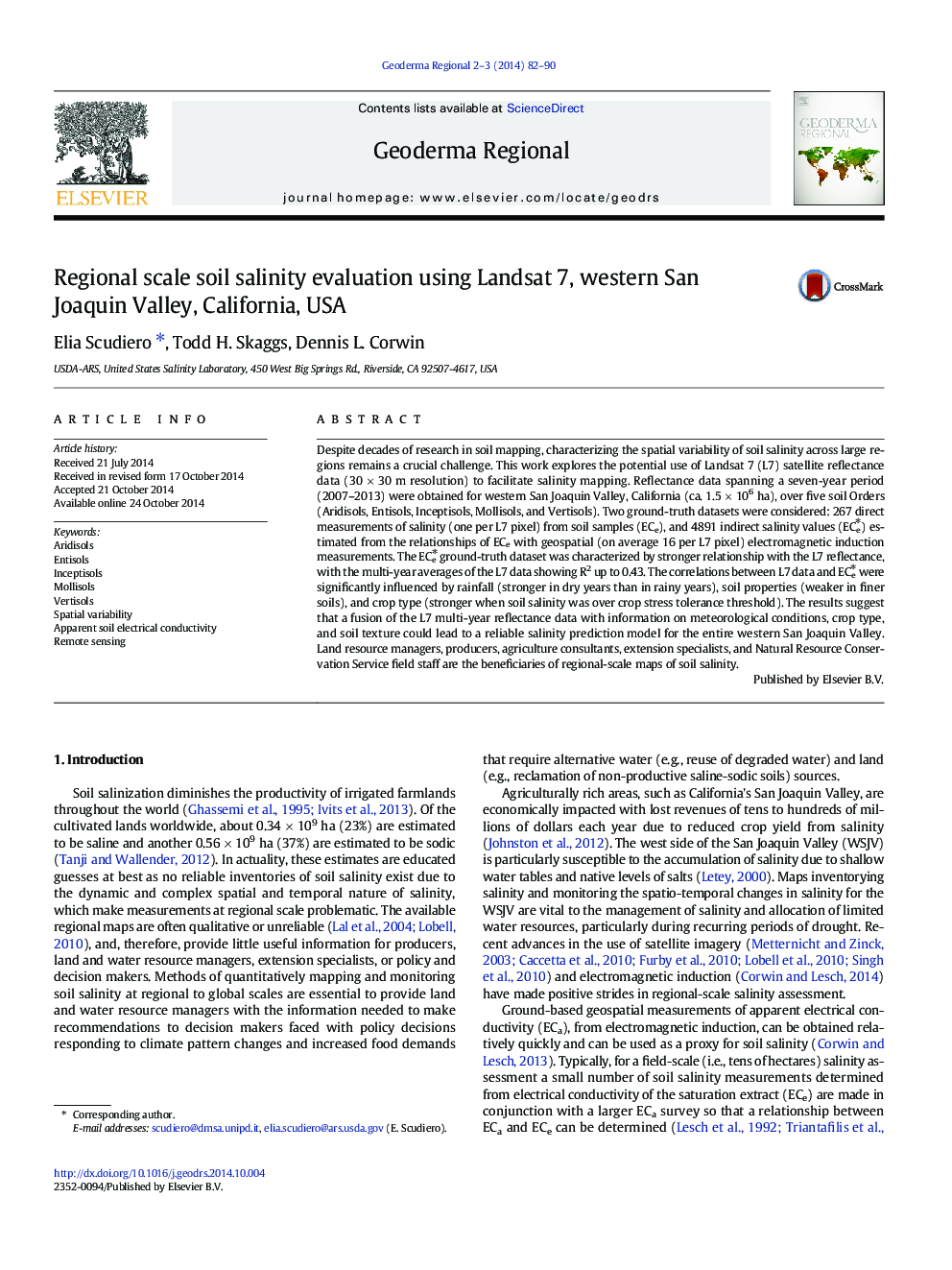| کد مقاله | کد نشریه | سال انتشار | مقاله انگلیسی | نسخه تمام متن |
|---|---|---|---|---|
| 4480814 | 1623012 | 2014 | 9 صفحه PDF | دانلود رایگان |
• Relationships between soil salinity and Landsat 7 crop reflectance were studied.
• Multi-year analysis of Landsat 7 data highlights soil salinity effects.
• Between fields, the Landsat 7–salinity relationships vary according to soil type.
• Between years, the relationships vary according to meteorological conditions.
Despite decades of research in soil mapping, characterizing the spatial variability of soil salinity across large regions remains a crucial challenge. This work explores the potential use of Landsat 7 (L7) satellite reflectance data (30 × 30 m resolution) to facilitate salinity mapping. Reflectance data spanning a seven-year period (2007–2013) were obtained for western San Joaquin Valley, California (ca. 1.5 × 106 ha), over five soil Orders (Aridisols, Entisols, Inceptisols, Mollisols, and Vertisols). Two ground-truth datasets were considered: 267 direct measurements of salinity (one per L7 pixel) from soil samples (ECe), and 4891 indirect salinity values (ECe⁎) estimated from the relationships of ECe with geospatial (on average 16 per L7 pixel) electromagnetic induction measurements. The ECe⁎ ground-truth dataset was characterized by stronger relationship with the L7 reflectance, with the multi-year averages of the L7 data showing R2 up to 0.43. The correlations between L7 data and ECe⁎ were significantly influenced by rainfall (stronger in dry years than in rainy years), soil properties (weaker in finer soils), and crop type (stronger when soil salinity was over crop stress tolerance threshold). The results suggest that a fusion of the L7 multi-year reflectance data with information on meteorological conditions, crop type, and soil texture could lead to a reliable salinity prediction model for the entire western San Joaquin Valley. Land resource managers, producers, agriculture consultants, extension specialists, and Natural Resource Conservation Service field staff are the beneficiaries of regional-scale maps of soil salinity.
Journal: Geoderma Regional - Volumes 2–3, November–December 2014, Pages 82–90
